Minimum force required to keep a block of mass 1 kg at rest against a rough vertical wall is P. If a force P/2 is applied then the acceleration of the block will be :
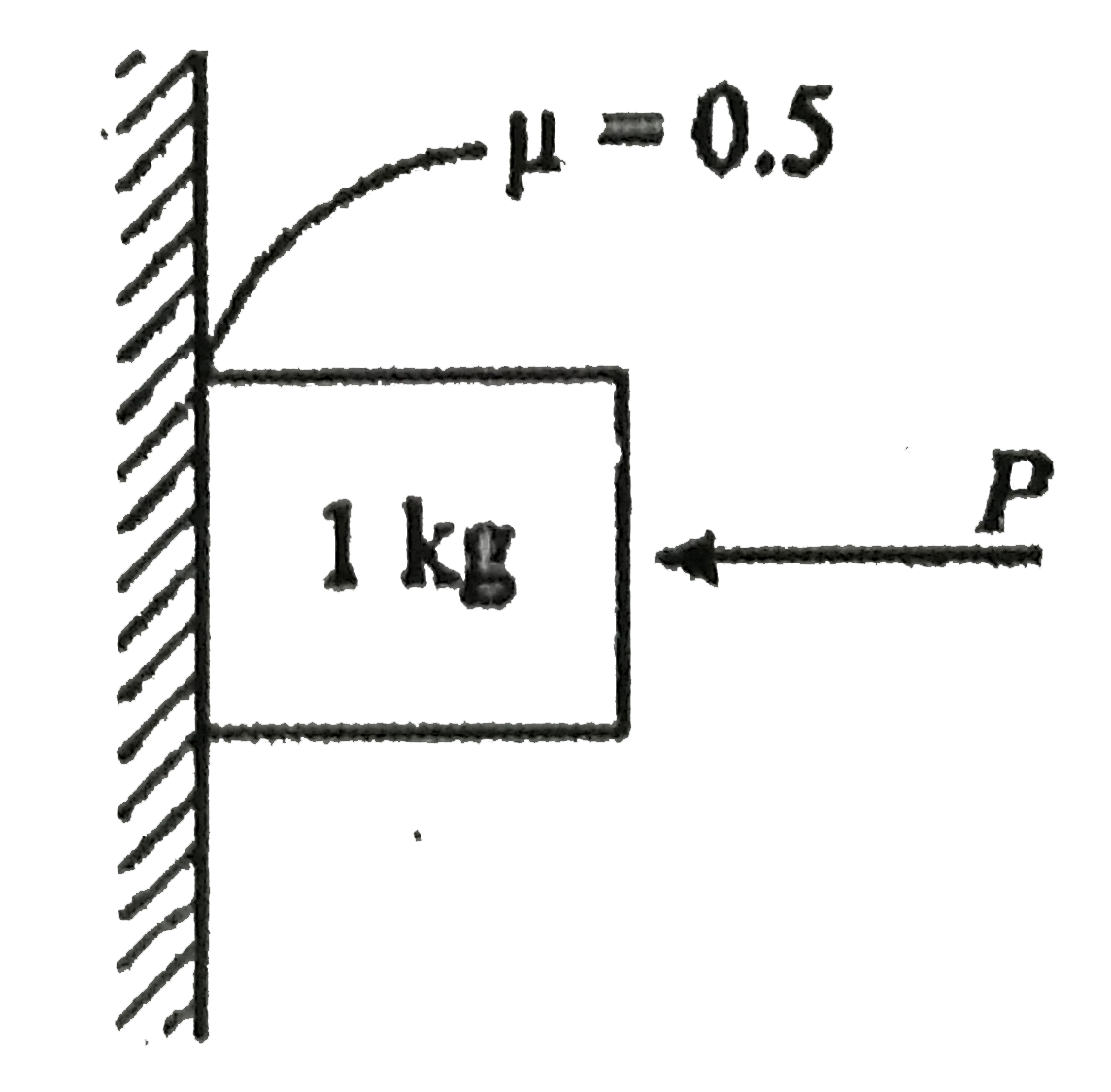
5m/s2
2.5m/s2
2m/s2
0.9m/s2
The correct Answer is:A
Step by step video, text & image solution for Minimum force required to keep a block of mass 1 kg at rest against a rough vertical wall is P. If a force P//2 is applied then the acceleration of the block will be : by Physics experts to help you in doubts & scoring excellent marks in Class 11 exams.
Updated on:21/07/2023Topper's Solved these Questions
- NEWTONS LAWS OF MOTIONBOOK - PHYSICS GALAXY - ASHISH ARORACHAPTER - NEWTONS LAWS OF MOTIONEXERCISE - Advance MCQs
17 Videos
- NEWTONS LAWS OF MOTIONBOOK - PHYSICS GALAXY - ASHISH ARORACHAPTER - NEWTONS LAWS OF MOTIONEXERCISE - Unsolved Numerical Problem
81 Videos
- NEWTONS LAWS OF MOTIONBOOK - PHYSICS GALAXY - ASHISH ARORACHAPTER - NEWTONS LAWS OF MOTIONEXERCISE - Conceptual MCQs
23 Videos
- LINEAR MOMENTUM & ITS CONSERVATIONBOOK - PHYSICS GALAXY - ASHISH ARORACHAPTER - LINEAR MOMENTUM & ITS CONSERVATIONEXERCISE - exercise 1.3
3 Videos
- RIGID BODIES AND ROTATIONAL MOTIONBOOK - PHYSICS GALAXY - ASHISH ARORACHAPTER - RIGID BODIES AND ROTATIONAL MOTIONEXERCISE - Unsolved Numerical
63 Videos
Similar Questions
A block of mass 1 kg is pushed against a rough vertical wall of μ=0.1

For F = 150, 50 or 100 N the force of friction on the blocks is respectively :
View SolutionA block of mass 10 kg is kept over a rough surface and a force F=4t is applied on it. At what value of t the block will start moving :-

View Solution
Knowledge Check
A block of mass 1 kg is held at rest against a rough vertical surface by pushing by a force F horizontally. The coefficient of friction is 0.5. When
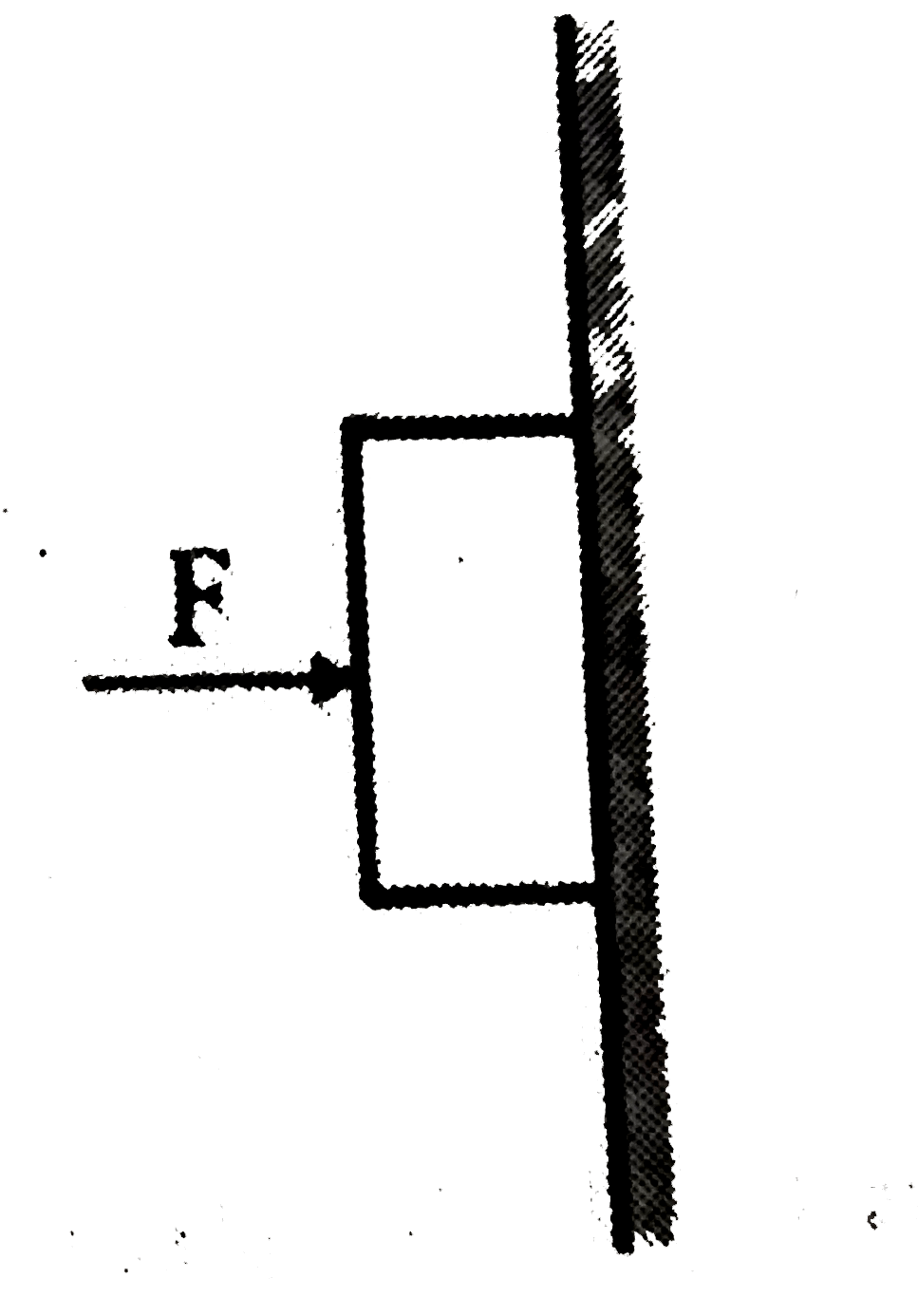 AF = 40 N, friction on the block is 20 N.BF = 30 N, friction on the block is 10 N.CC = 20 N, friction on the block is 10 N.DMinimum value of force F to keep block at rest is 20 N.
AF = 40 N, friction on the block is 20 N.BF = 30 N, friction on the block is 10 N.CC = 20 N, friction on the block is 10 N.DMinimum value of force F to keep block at rest is 20 N.A rectangular block of mass 2 kg is to be held against a rough vertical wall by applying a force of 98 N perpendicular to the wall. What is the coefficients of friction if the applied force is the minimum required force?
A0.1B0.15C0.2D0.3A block of mass 2kg is held at rest against a rough vertical wall by passing a horizontal (normal) force of 45N. Coefficient of friction between wall and the block is equal to 0.5. Now a horizontal force of 15N (tangential to wall) is also applied on the block. Then the block will :
AMove horizontally with acceleration of 5m/s2BStart to move with an acceleration of magnitude 1.25m/s2CRemain stationaryDStart to move horizontally with acceleration greater than 5m/s2
A block of mass 4kg is pushed against a rough vertical wall with a force 80N is applied on the block in a direction parallel to the wall . Will the block move? If yes , what is acceleration of the block ?
View SolutionBlock A of mass 5 kg is resting on a frictionless floor. Another block B of mass 7kg is resting on it as shown in the figure. The coefficient of friction between the blocks is 0.5 while kinetic friction is 0.4. If a force of 100 N is applied to block B, the acceleration of the block A will be (g=10ms−2) :
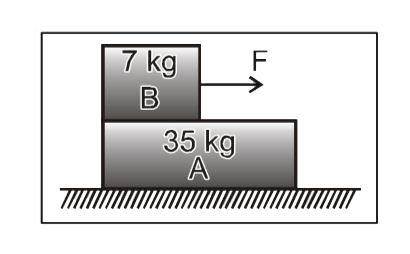
View SolutionA cubical block of side 'a' is held at rest, against a rough vertical wall by applying a force F acting along the centre. The mass of the block is m. Taking acceleration due to gravity as 'g' , determine
(i) The minimum coefficient of friction between the block and wall
(ii) The torque by normal reaction about the centre of mass
View Solution(i) In the arrangement shown in the figure the coefficient of friction between the 2 kg block and the vertical wall is μ=0.5. A constant horizontal force of 40 N keeps the block pressed against the wall. The spring has a natural length of 1.0 m and its force constant is k=400Nm–1. What should be the height h of the block above the horizontal floor for it to be in equilibrium. The spring is not tied to the block.
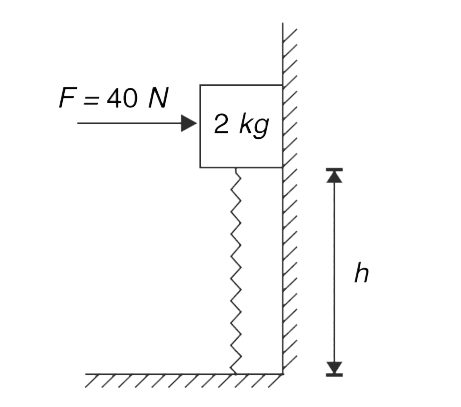
(ii) A block of mass M is pressed against a rough vertical wall by applying a force F making an angle of θ with horizontal (as shown in figure). Coefficient of friction between the wall and the block is μ=0.75.
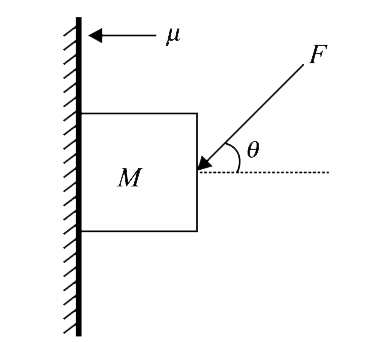
(a) If F = 2 Mg, find the range of values of θ so that the block does not slide
[Take tan37∘=0.75,sin24∘=0.4]
(b) Find the maximum value of θ above which equilibrium is not possible for any magnitude of force F.
View SolutionA rectangular block of mass 6 kg is to be held against a rough vertical wall by appplying a force perpendicular to the wall. What is the minimum force to be applied, if the coefficient of friction is 0.42?
View Solution
